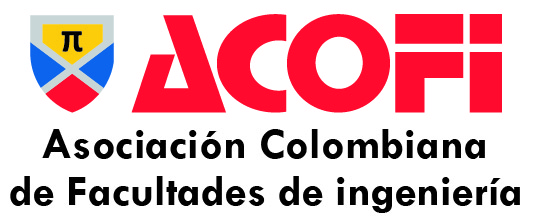Modelo de aprendizaje activo para desarrollar habilidades de identificación, formulación y resolución de problemas de ingeniería industrial
DOI:
https://doi.org/10.26507/rei.v4n7.75Palabras clave:
competencias ABET, educación en ingeniería, aprendizaje activo en ingenieríaResumen
El diseño de organizaciones efectivas está ligado a la labor del ingeniero industrial que interviene en la concepción de dichos sistemas sociales. Lograr que el ingeniero se desempeñe apropiadamente en la habilidad de identificación, formulación y resolución de problemas de ingeniería requiere propuestas innovadoras en metodologías de aprendizaje. Teniendo en cuenta lo anterior, este artículo propone un modelo de aprendizaje activo para estudiantes que les permite integrar diferentes habilidades para que tengan la capacidad de intervenir efectivamente en una situación organizacional reforzando sus capacidades de observación, concepción e implementación de soluciones de ingeniería. El artículo consta de cuatro partes: 1) la identificación de algunas de las habilidades requeridas por los ingenieros; 2) una propuesta de modelo de aprendizaje activo que responda a esas habilidades requeridas; 3) dos casos de aplicación del modelo en ingeniería industrial; 4) conclusiones.
Descargas
Referencias bibliográficas
ABET. (2007). Criteria For accrediting engineering programs. Engineering accreditation commission [en línea]. Consultado el 30 de octubre de 2008 en: http://www.abet.org
Acevedo, J., Barros, R., Ramírez, C., Realpe, N. (2009-enviado para publicación). Engineers and their role in public policy: An active learning experience for enhancing the understanding of the State. European Journal of Engineering Education.
Barros R., Ramírez, C., Stradaioli, K. (2008). Learning about the influence of certain strategies and communication structures in the organizational effectiveness. SEFI 36th Annual Conference, Aalborg, Dinamarca, Julio.
Barros, R. (2009-enviado para publicación). Making computer-supported collaborative learning inclusive to improve students’ mathematical problem-solving skills. Ubiquitous Learning: An International Journal, Vol. 1, No. x, pp. xx-xx.
Cohen, A., Ennis, W., Wolkon, G. (1961). The Effects of Continued Practice on the Behaviors of Problem- Solving Groups. Sociometry, Vol. 24, No. 4, pp. 416-431.
De Laat, M., & Lally, V. (2005). Investigating group structure in CSCL: some new approaches. Information Systems Frontiers, Vol. 7, No. 1, pp. 13-25.
Deutsch, M. (1968). The Effects of Cooperation and Competition upon Group Process. In: Cartwright and Zander (eds). Group Dynamics: Research and Theory. Third Edition. Harper & Row, Publishers. New York.
Duque, M. (2006). Competencias, Aprendizaje Activo e Indagación: Un caso práctico en ingeniería. Revista Educación en Ingeniería. Asociación Colombiana de Facultades de Ingeniería ACOFI. No. 2, pp. 7-18.
Espejo, R., Schuhmann, W., Schwaninger, M., & Bilello U. (1996). Organizational transformation and learning: A cybernetic approach to management. Chichester, UK: Wiley.
Hernández, J., Ramírez, M. (2008). Innovation and Teamwork Training in Undergraduate Engineering Education. The fair and the contest: milestones of innovation. 8th International Workshop ALE 2008, Bogotá, Colombia, Junio.
Illeris, K. (2003). Towards a contemporary and comprehensive theory of learning. International Journal of Lifelong Education, Vol. 22, No. 4, pp. 396–406.
Kolb, D. (1984) Experiential Learning: experience as the source of learning and development. Upper Saddle River, NJ:Prentice-Hall.
Kreijns, K. Kirschner, P., & Jochems, W. (2003). Identifying the pitfalls for social interaction in computersupported collaborative learning environments: a review of the research. Computers in Human Behavior, Vol. 19, pp. 335-353.
Laverie, D. (2006). In-Class Active Cooperative Learning: A way to Build Knowledge and Skills in Marketing Courses. Marketing Education Review, Vol. 16, No. 2, pp. 59-76.
Ma, J., Nickerson, J. (2006). Hands-on, simulated, and remote laboratories: A comparative literatura review. ACM Computing Surverys, Vol. 38, No. 3, Article 7.
Meyers, G., Jones, T. (1993). Promoting Active Learning Strategies for the College Classroom. San Francisco: Jossey-Bass.
National Research Council. (2003). Inquiry and the national science educational standards. National Academy Press.
Ramírez C., Bermeo J., Barros R., Hernández R., Díaz F. (2008). Evaluating the impact of role-playing game in active learning in engineering education: a case study. 8th International Workshop ALE 2008, Bogotá, Colombia, Junio.
Reyes, A., Zarama, R. (1998). Learning by playing: An application of the process of embodying distinctions. In: World Multiconference on Systemics, Cybernetics and Informatics: SCI98, Orlando, FL.
Salkind, N. (2004). An introduction to theories of human development. California: Sage Publications.
Shaw, M. (1976). Group Dynamics: The Psychology of Small Group Behavior. Second Edition. McGraw Hill Book Company. United States of America.
Descargas
Publicado
Cómo citar
Número
Sección
Licencia
Se autoriza la reproducción total o parcial de los documentos publicados en la Revista siempre y cuando se cite la fuente y el autor.
| Estadísticas de artículo | |
|---|---|
| Vistas de resúmenes | |
| Vistas de PDF | |
| Descargas de PDF | |
| Vistas de HTML | |
| Otras vistas | |








